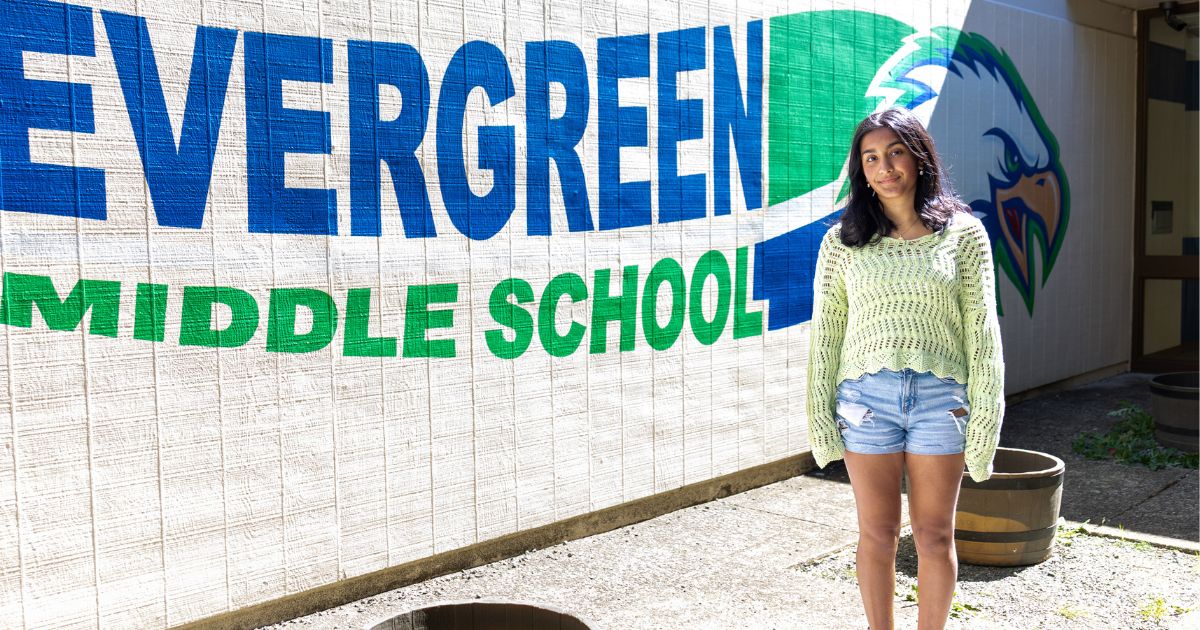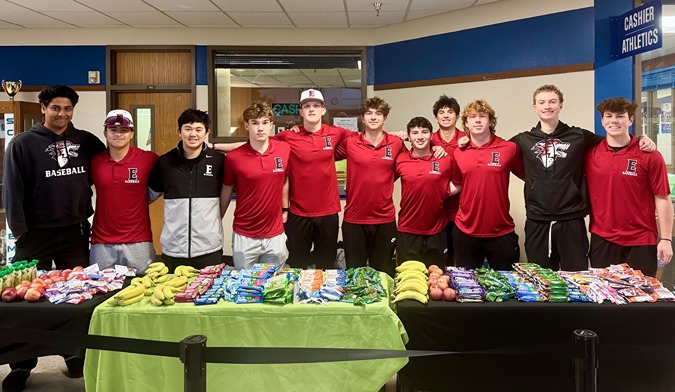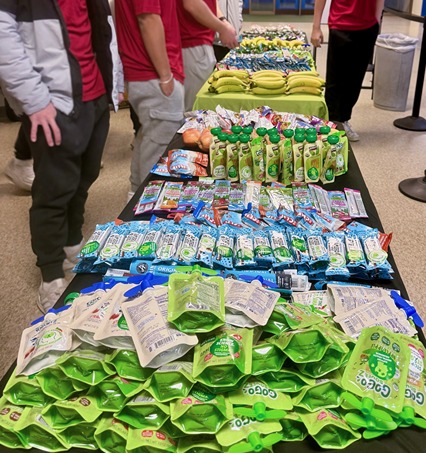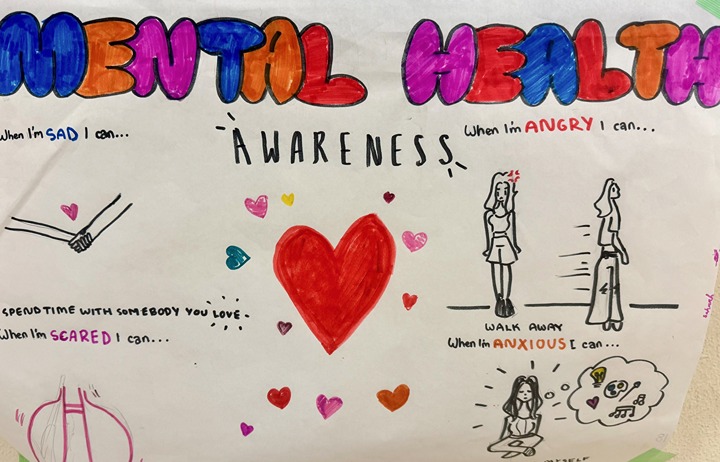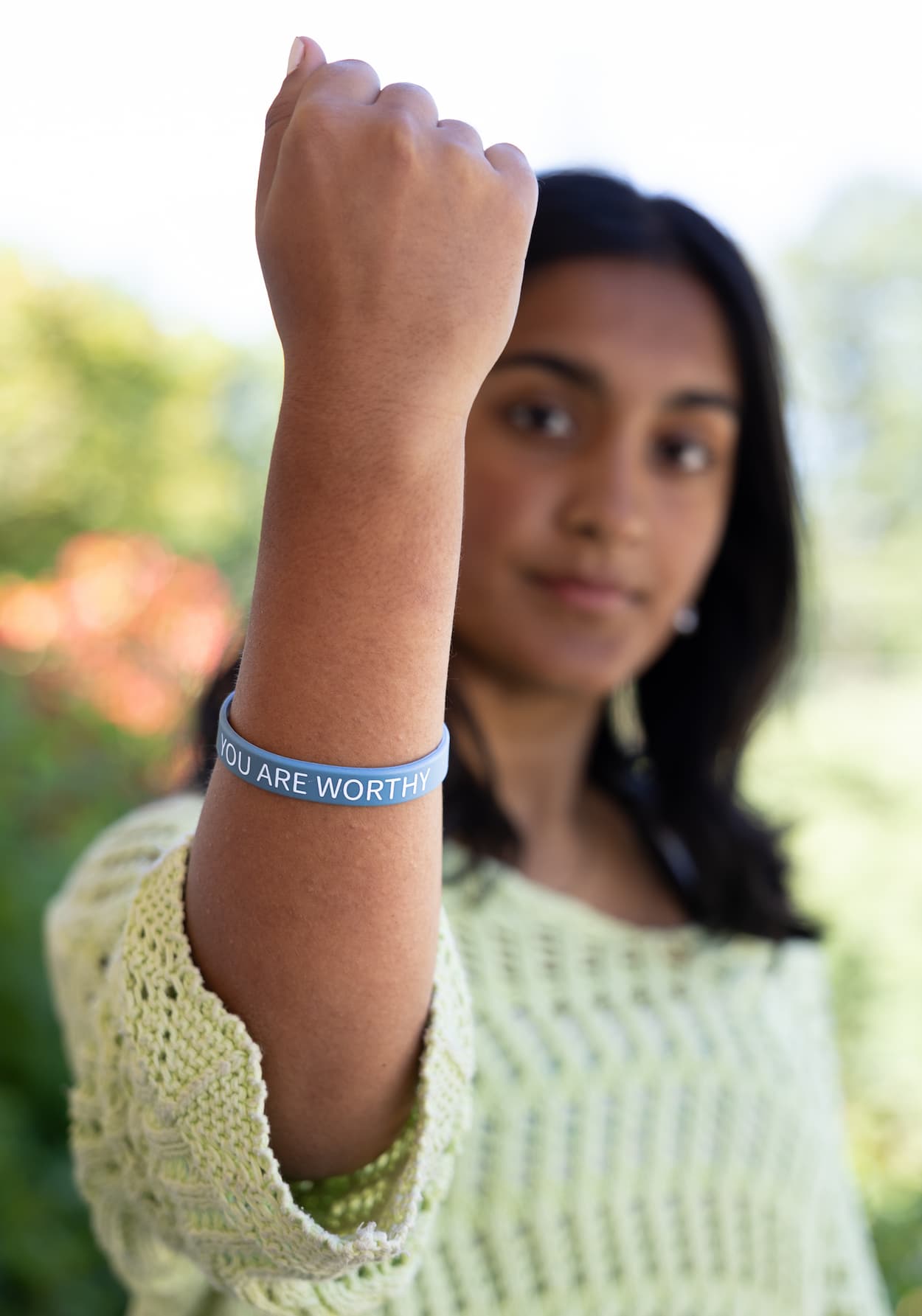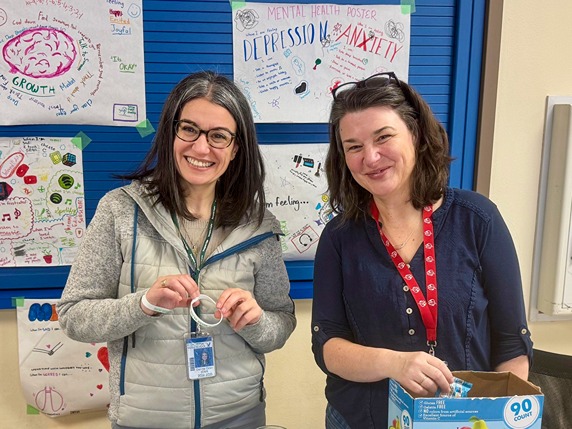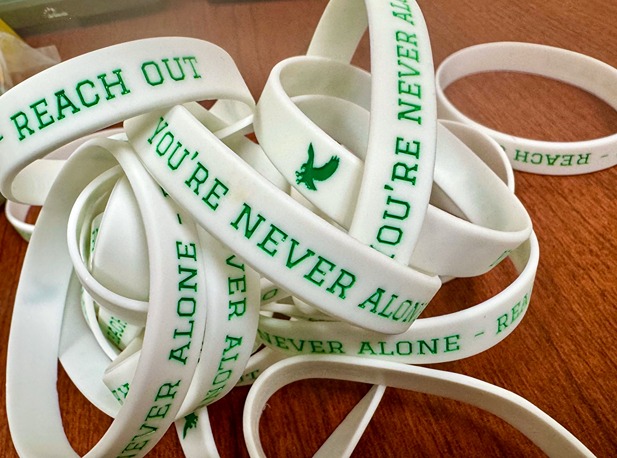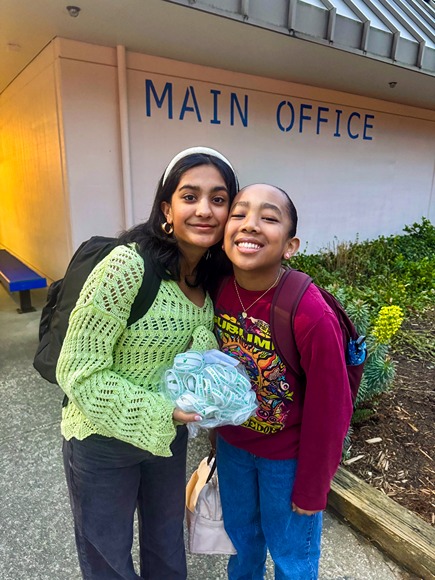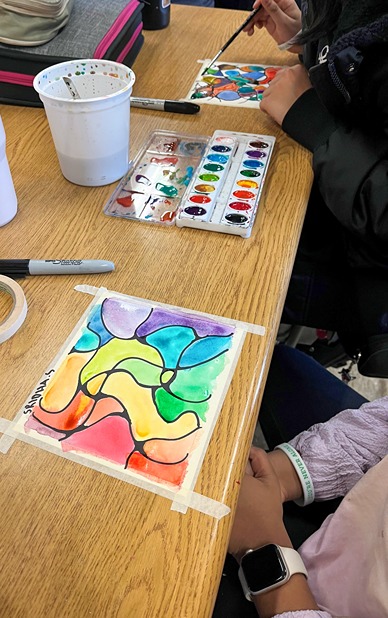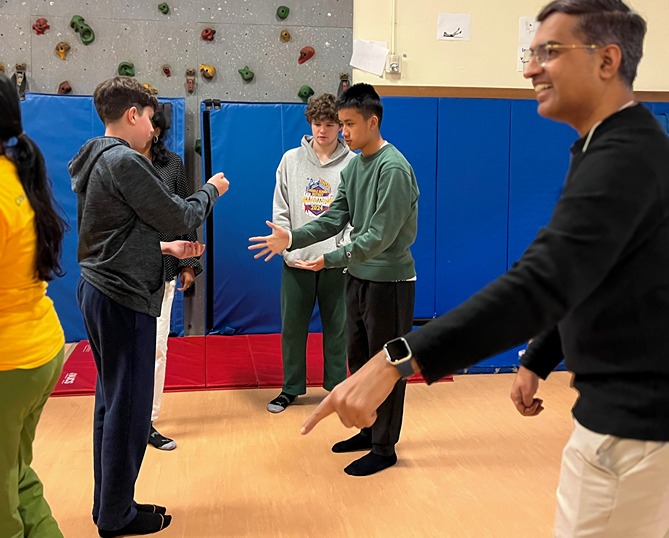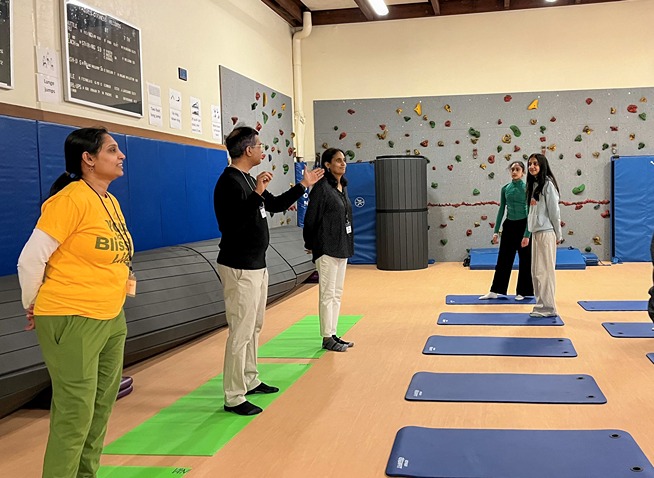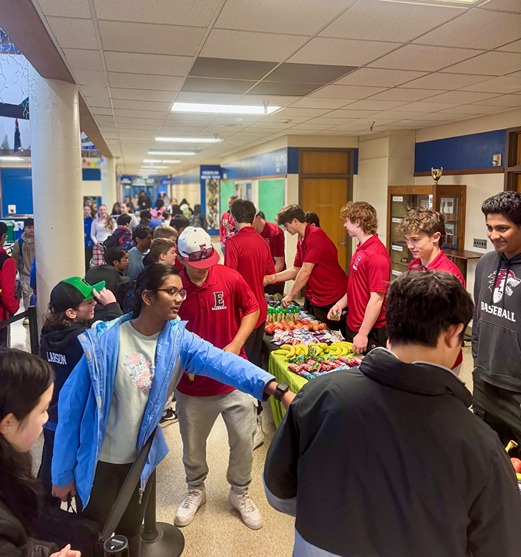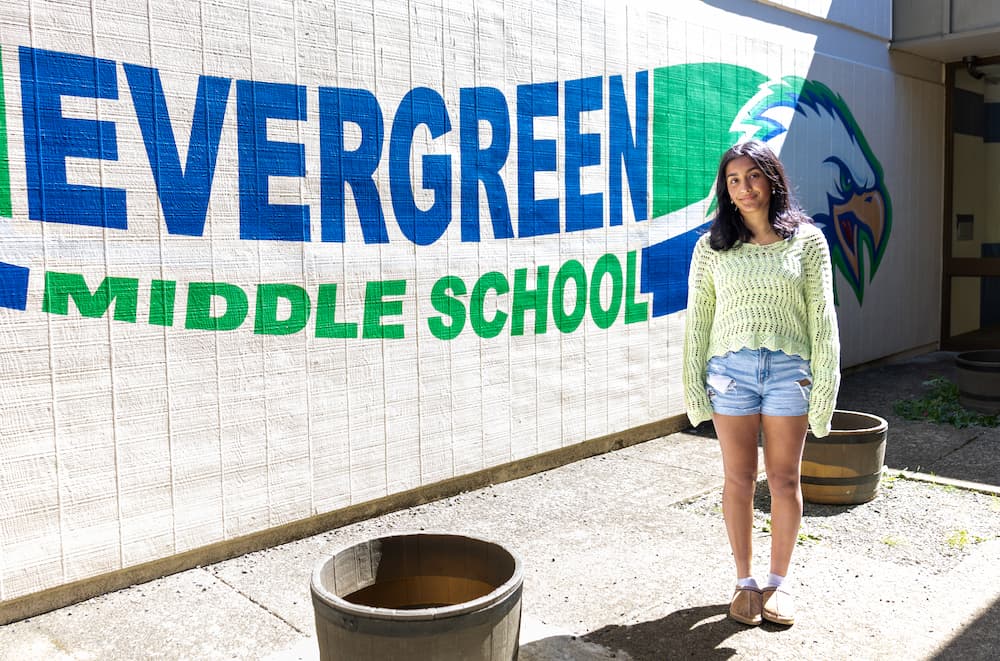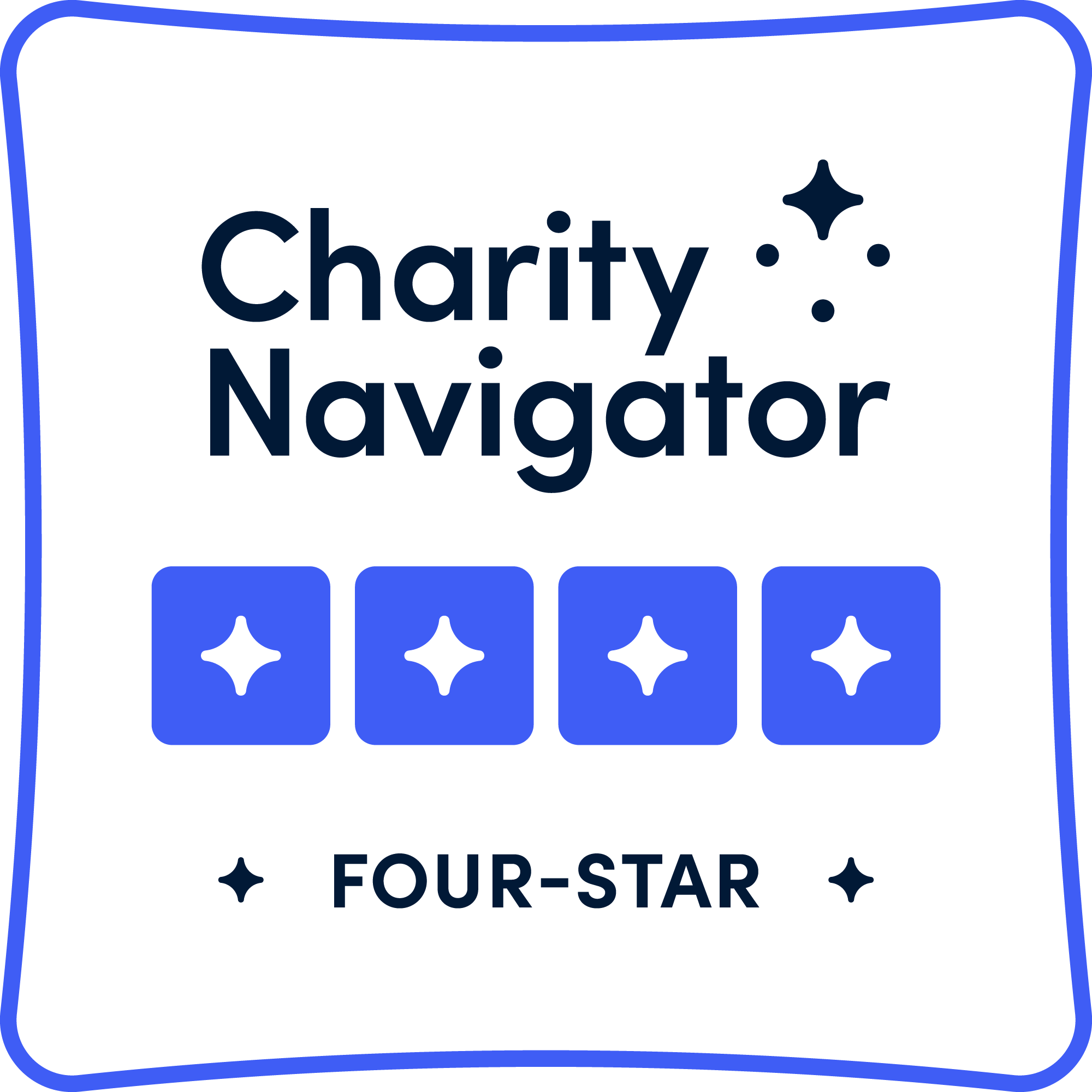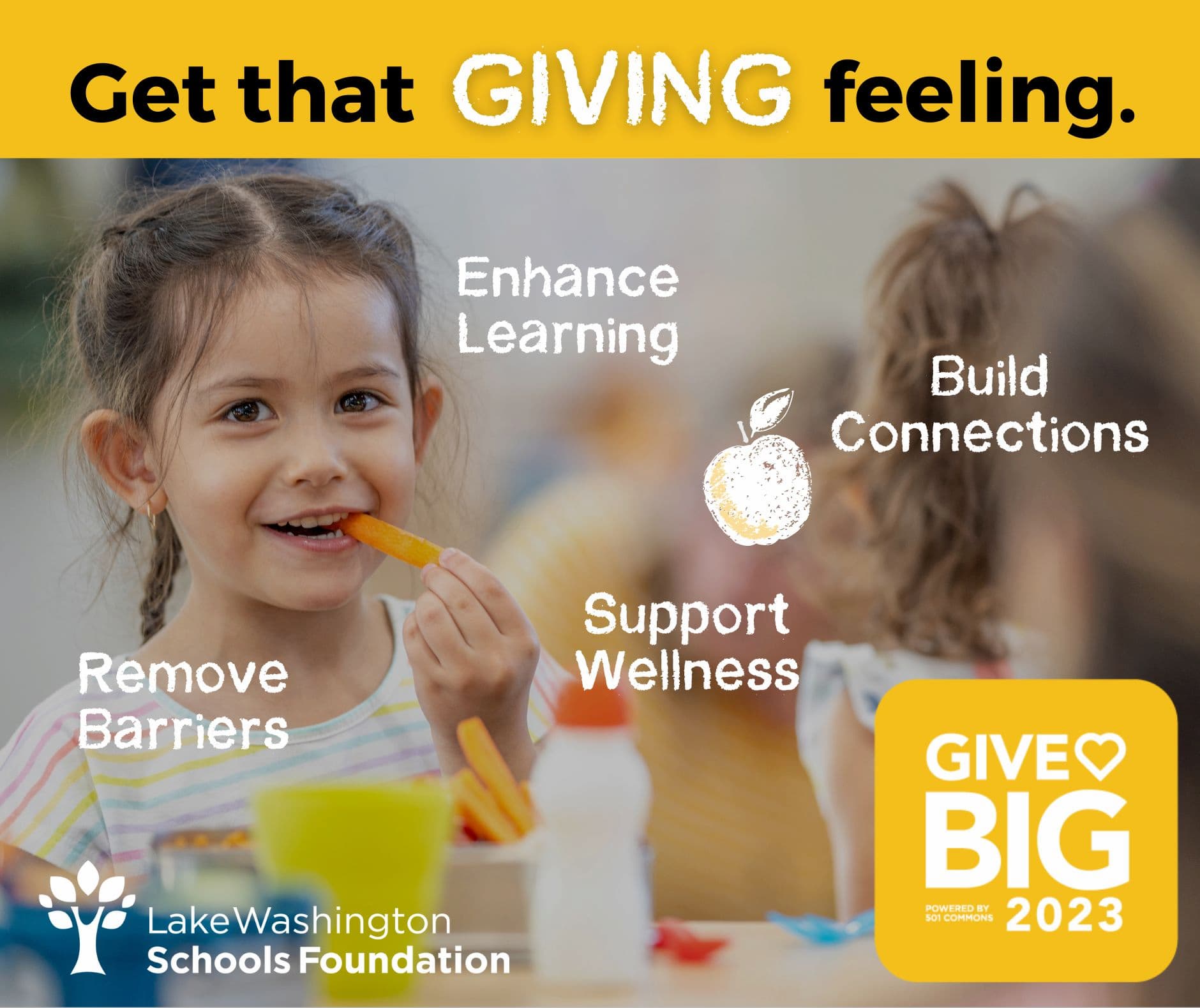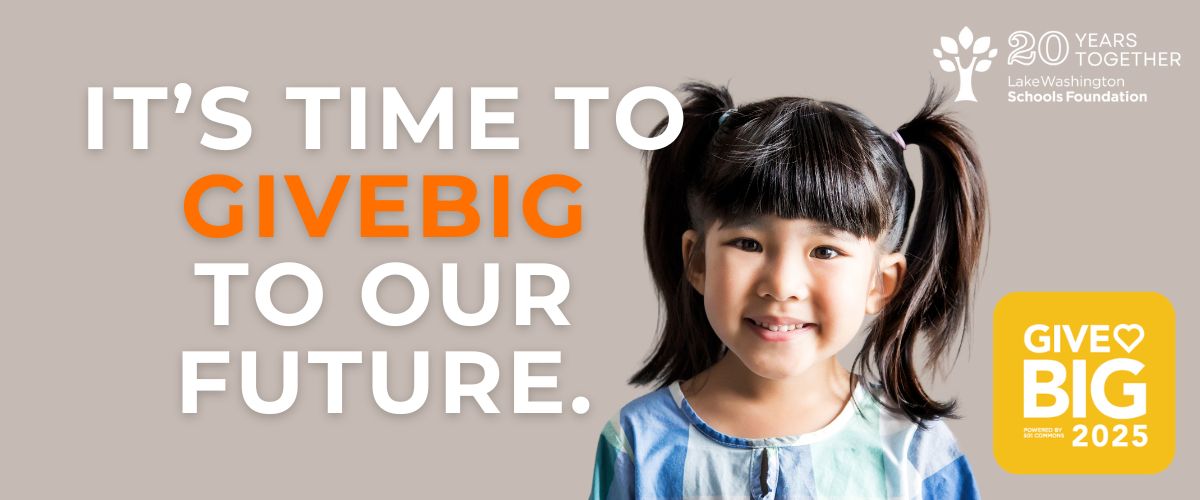Pictured above: Aarna Joshi
When Aarna Joshi, an 7th grader at Evergreen Middle School, sat down with her dad Girish to talk about the challenges teens face with mental health, she didn’t expect the conversation to spark a school-wide initiative. But that’s exactly what happened this March, when Aarna and a team of students and staff led a four-day mental awareness campaign designed to break the stigma, start meaningful conversations, and help students feel more in control of their mental well-being.
Funding for this initiative was provided by the Lake Washington Schools Foundation, whose support helped bring the project to life with materials, supplies, and encouragement for student-led wellness efforts.
“We wondered if kids would be more in control if they had more knowledge,” said Aarna. “That idea became the starting point for this initiative.”
Aarna’s father, Girish Joshi, who also serves as a trustee for the Lake Washington Schools Foundation, was both a sounding board and supporter in the early planning stages.
“As educators and community leaders, we have both the privilege and the responsibility to shape not just minds, but the character and resilience of future generations,” said Girish. “Building awareness around mental well-being — and helping students understand the power of self-awareness — is foundational to this work.”
A Week of Awareness and Action
From eye-catching posters to interactive activities, Evergreen Middle School’s Mental Health Awareness Week was designed to meet students where they were—literally and emotionally.
Students decorated hallways, classrooms, and common areas with posters sharing facts about mental health, tips for self-care, and reminders that it’s okay to ask for help. “Seeing these messages around school made a difference,” Aarna noted. “It encouraged people to talk about mental well-being.”
One of the week’s highlights was a lunchtime game where students spun a wheel and landed on categories like mental health trivia, self-care challenges, and stress-relief tips. The game was both fun and informative—so much so that some students got back in line for another turn.
“We got a lot of positive feedback from the spin-the-wheel activity,” Aarna shared. “There was a huge line, and even people going two or three times!”
Some questions and prompts from the wheel included:
- True or False: Did the pandemic affect teen mental health? If so, how?
- Let’s try square breathing. This is how.
- Name one trusted adult you could talk to about your feelings.
During their flex time periods, students also had the opportunity to participate in different activities, such as mindfulness techniques, relaxation exercises, or just really taking the time to check in with themselves. These sessions gave students a rare and valuable opportunity to break from their usual routine to slow down and prioritize their own mental well-being.
To reach beyond the classroom, students shared content on social media, reinforcing messages from the week and inviting more voices into the conversation.
A Team Effort: Students and Staff Working Together
What made this week especially impactful was the strong partnership between students and staff. Aarna, along with counselors Dylan Slatton and Denise Ozeri, and her dad Girish, formed the core planning committee. A dedicated, student-led team implemented the effort by making posters, managing social outreach, and encouraging classmates to participate.
“Mr. Slatton really pushed this initiative forward, transforming it from an idea—a rough outline really—to a full week schedule,” Aarna said.
Reflecting on the week, Dylan shared: “I think Mental Health Awareness Week was a big success. It was a pleasure partnering with community stakeholders like Lake Washington Schools Foundation, Youth Eastside Services and our PTSA to bring a variety of events and activities to the students this year. Our theme was ‘Reach out, you’re never alone,’ with the goal of normalizing talking about mental health and encouraging students to get support if they are struggling.”
They even partnered with a local high school varsity team to hand out snacks and support the event
Shifting Perspectives, Sparking Change
The response from students and teachers have been very positive. Students talked more openly about mental health—many for the first time. Aarna overheard comments like, “I didn’t know I was experiencing some of those symptoms of stress,” and “Ohh, that’s what stigma means.”
Events like this help lay the foundation for a more compassionate school environment—one where students feel safe talking about their feelings, checking in with themselves, and supporting one another. As Aarna and her team showed, building a culture of care starts with small steps, consistent effort, and student leadership at the heart.
“As a father and member of this community, I believe deeply in our shared duty to nurture the whole child,” Girish added. “When we come together with compassion and purpose, we foster a learning environment where every student feels safe, supported, and empowered to thrive—academically, socially, and emotionally.”
What’s Next?
Aarna hopes this isn’t the end, but the beginning. Her vision includes:
- More student-led mental wellness events throughout the year
- An inclusive student team with people from all grades
- Normalizing mental health discussions in everyday school life
“We want to keep the momentum going,” Aarna said. “And we hope other schools can take inspiration from this and create their own awareness events.”
